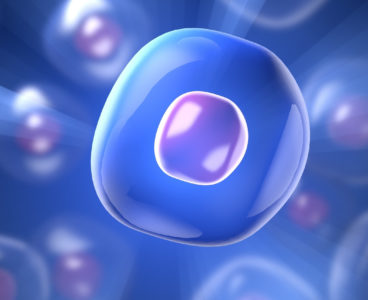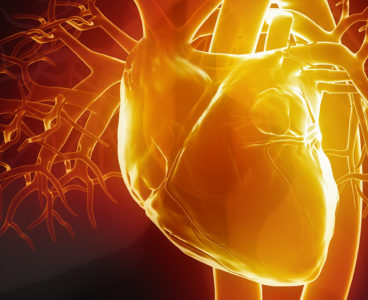Combining a first laser pulse to heat up and “drill” through a plasma, and another to accelerate electrons to incredibly high energies in just tens of centimeters, scientists have nearly doubled the previous record for laser-driven particle acceleration. The laser-plasma experiments, conducted at the Department of Energy’s Lawrence Berkeley National Laboratory (Berkeley Lab), are pushing…
Sensors Probe for Dark Matter Particles
Figuring out how to extend the search for dark matter particles — dark matter describes the stuff that makes up an estimated 85 percent of the total mass of the universe yet so far has only been measured by its gravitational effects — is a bit like building a better mousetrap. That is, a mousetrap…
Laser Excites Tiny Particles for Deep-tissue Imaging
A research team has demonstrated how light-emitting nanoparticles, developed at the U.S. Department of Energy’s Lawrence Berkeley National Laboratory (Berkeley Lab), can be used to see deep in living tissue. The specially designed nanoparticles can be excited by ultralow-power laser light at near-infrared wavelengths considered safe for the human body. They absorb this light and…
Scientists Put the Squeeze on Nanocrystals
A team led by scientists at the U.S. Department of Energy’s Lawrence Berkeley National Laboratory (Berkeley Lab) found a way to make a liquid-like state behave more like a solid, and then to reverse the process. They put a droplet of a liquid containing iron oxide nanocrystals into an oily liquid containing tiny polymer strands.…
Next-Gen Dark Matter Experiment Hunts Down WIMPs
A large titanium cryostat designed to keep its contents chilled to minus 148 degrees has completed its journey from Europe to South Dakota, where it will become part of a next-generation dark matter detector for the LUX-ZEPLIN (LZ) experiment. The U.S. Department of Energy’s Lawrence Berkeley National Laboratory (Berkeley Lab) is leading the LZ project,…
Continuously Emitting Microlasers Created Using Nanoparticle-Coated Beads
Researchers have found a way to convert nanoparticle-coated microscopic beads into lasers smaller than red blood cells. These microlasers, which convert infrared light into light at higher frequencies, are among the smallest continuously emitting lasers of their kind ever reported and can constantly and stably emit light for hours at a time, even when submerged…
Diamond Technology Offers Cheaper Medical Imaging and Tools
It may sound contradictory, but diamonds are the key to a new technique that could provide a very-low-cost alternative to multimillion-dollar medical imaging and drug-discovery devices. An international team led by scientists at the Department of Energy’s Lawrence Berkeley National Laboratory (Berkeley Lab) and UC Berkeley discovered how to exploit defects in nanoscale and microscale…
Sugar-Coated Nanosheets Hit Specific Pathogen Targets
Researchers have developed a process for creating ultrathin, self-assembling sheets of synthetic materials that can function like designer flypaper in selectively binding with viruses, bacteria, and other pathogens. In this way the new platform, developed by a team led by scientists at the U.S. Department of Energy’s Lawrence Berkeley National Laboratory (Berkeley Lab), could potentially…
Breakthrough in 2-D Semiconductor Crystal Research
A research team from the Department of Energy’s Lawrence Berkeley National Laboratory (Berkeley Lab) has found the first evidence that a shaking motion in the structure of an atomically thin (2-D) material possesses a naturally occurring circular rotation. This rotation could become the building block for a new form of information technology, and for the…
One Spark Starts It All
Every powerful X-ray pulse produced for experiments at a next-generation laser project, now under construction, will start with a “spark” — a burst of electrons emitted when a pulse of ultraviolet light strikes a 1-millimeter-wide spot on a specially coated surface. A team at the U.S. Department of Energy’s Lawrence Berkeley National Laboratory (Berkeley Lab)…
A Deeper Look into the Makeup of Neutrinos
The first glimpse of data from the full array of a deeply chilled particle detector operating beneath a mountain in Italy sets the most precise limits yet on where scientists might find a theorized process to help explain why there is more matter than antimatter in the universe. This new result, published online at arXiv.org…
Graphene-Wrapped Nanocrystals Pave Way for Next-Gen Fuel Cells
A powdery mix of metal nanocrystals wrapped in single-layer sheets of carbon atoms, developed at the Department of Energy’s Lawrence Berkeley National Laboratory (Berkeley Lab), shows promise for safely storing hydrogen for use with fuel cells for passenger vehicles and other uses. And now, a new study provides insight into the atomic details of the…
Graphene System “Sees” Electrical Signaling in Heart, Nerve Cells
Scientists have enlisted the exotic properties of graphene, a one-atom-thick layer of carbon, to function like the film of an incredibly sensitive camera system in visually mapping tiny electric fields in a liquid. Researchers hope the new method will allow more extensive and precise imaging of the electrical signaling networks in our hearts and brains.…
Contaminated Drinking Water Cleaned by Glowing Crystals
Tiny, glowing crystals designed to detect and capture heavy-metal toxins such as lead and mercury could prove to be a powerful new tool in locating and cleaning up contaminated water sources. Motivated by publicized cases in which high levels of heavy metals were found in drinking water in Flint, Mich., and Newark, N.J., a science…
Chemical “Sponges” Absorb Toxic Chemo Drugs Once They Do Their Job
Doctors have a powerful arsenal of cancer-fighting chemotherapy drugs to choose from, though a key challenge is to better target these drugs to kill tumors while limiting their potentially harmful side effects. Now, researchers at the Department of Energy’s Lawrence Berkeley National Laboratory (Berkeley Lab) are helping to develop and test materials for a new…


